Wednesday, January 28, 2009
New Blogspot Address
http://modern-arki.blogspot.com, and
http://greenarki.blogspot.com.
My new blogspot would be
http://architectureoverload.blogspot.com.
Sorry for the inconvenience and hoping you visit my new site.
Tuesday, January 27, 2009
Consorcio Building Concepcion / Enrique Browne
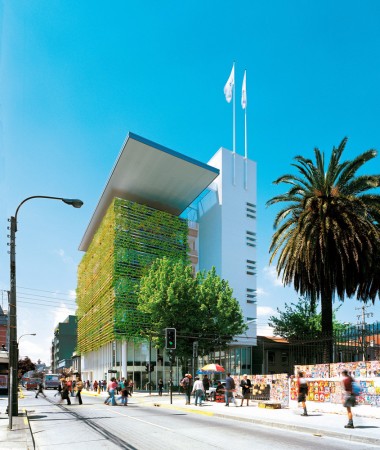
Architects: Enrique Browne y Asociados Arquitectos
Location: Concepción, Chile
Associated Architect: Patricio Browne
Collaborators: Enrique C. Browne, Sebastián Morandé, Davor Pavlovic
Project year: 2003-2004
Site Area: 1,096 sqm
Constructed Area: 3,789 sqm
Structural Consultants: Ruiz y Saavedra Ingenieros
Contractor: Ignacio Hurtado y Cia.
Technical Inspection: Juan Eduardo Mujica
Photographs: Guy Wenborne
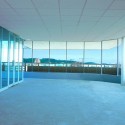
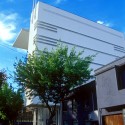
The rainy city of Concepción, is located in the mouth of the Bío-Bío River, 520 Km south of Santiago. It has aprox. 220.000 inhabitants, but its threshold spans reaches some 630.000 people. The highlights of its economy are the elaboration of steel and the wood industry, both on wide exporting booms. We were asked to design a branch of the ‘Consorcio Nacional de Seguros’, National Insurance Consortium, in a corner site, in front of the only historic and antique church in Concepción, whose façade had been unfortunately reconstructed after an earthquake. Furthermore, it had a front fenced square that impoverished its quality and public character.
A first version was carried out. It consisted in a triangular building with the vertical circulation organized in a glazed tower in the south. Because the triangular building spun the first two floors in a double height space, a square was created, which joined to the church’s square, creating an environment of urban interest. In turn, the double point of the corner cantilever emphasized the building presence from the busy San Martin Street. The building was clad in copper. The glazed sectors had a ‘double skin’ with climbing plants on the North and West sides. This solution was eliminated for being expensive.
A simpler and more rectangular proposal was developed. The building also withdraws on the west to visually enlarge the square, which passes by the street, joining the old church to the new building. A interesting public space would be added to Concepción.
The building is composed basically by three elements:
a) A free plant “volume” that looks to the East, North and West, protected from the sun by laminated wood sections that support a “double green skin” with mature climbing plants. The wood use alludes to the regional production;
b) A “plan-volume” vertical to the South that flies over the square. Improves the energetic conservation of the building. It is clad in undulated metal plates, a material very utilized in the South of Chile in an economic version. Reminds as well the production of regional steel. Its tall and large windows allow views towards the hills of Concepción, but block the sight of the haphazard roofs of the city and;
c) A great “horizontal” cantilever roof that serves as an end of the building and protects the large balcony of the upper floor from the western sun wich has the view to the Bío-Bío river. In turn, emphatizes the relation with the small squate. These three bodies give the impression of detachment between them and are supported over a glazing membrane in the first two access and customer service levels. More ever, the main entrance is on axis to the church, on the other side of the square.
- type floor plan
- north elevation
- west elevation
- south elevation
- planting scheme
- planter detail
Sunday, January 25, 2009
Heart Hospital at NewYork-Presbyterian Medical Center
 The new Heart Hospital at NewYork-Presbyterian Medical Center will greatly expand the functional capacity of the Cardiology Department. The new building is an intervention in the existing hospital complex and serves to express the vitality and dynamism of the rapidly changing medical community it serves. A curving all-glass wall acts as a counterpoint to the existing masonry buildings and provides panoramic views of its spectacular setting to visitors, patients, and medical practitioners.
The new Heart Hospital at NewYork-Presbyterian Medical Center will greatly expand the functional capacity of the Cardiology Department. The new building is an intervention in the existing hospital complex and serves to express the vitality and dynamism of the rapidly changing medical community it serves. A curving all-glass wall acts as a counterpoint to the existing masonry buildings and provides panoramic views of its spectacular setting to visitors, patients, and medical practitioners. Inserted between two substantial existing hospital buildings, the new facility will provide a full range of medical services, including Diagnostics, Ambulatory Surgery, Cardiac Catheterization laboratories, Medical Practice suites, Critical Care units, and an Education/Conference center. The new hospital will be connected to the existing buildings on multiple levels, facilitating the continuity of medical departments and functional synergies.
Inserted between two substantial existing hospital buildings, the new facility will provide a full range of medical services, including Diagnostics, Ambulatory Surgery, Cardiac Catheterization laboratories, Medical Practice suites, Critical Care units, and an Education/Conference center. The new hospital will be connected to the existing buildings on multiple levels, facilitating the continuity of medical departments and functional synergies. The most prominent architectural feature, the multilayered, curved glass wall, suggests the forward-looking energy of the new institution, both technologically progressive and personally responsive. The seating areas behind the glass wall enjoy spectacular views of the Hudson River and the Palisades beyond. The double-glass construction allows for both energy efficiency and visual transparency. Electronically controlled vertical shades track the movement of the sun, maintaining a temperate internal environment and presenting a constantly changing façade. At night, strategically deployed lighting refracts through the glass envelope, which is suspended from the uppermost floor by a web of stainless steel cables.
The most prominent architectural feature, the multilayered, curved glass wall, suggests the forward-looking energy of the new institution, both technologically progressive and personally responsive. The seating areas behind the glass wall enjoy spectacular views of the Hudson River and the Palisades beyond. The double-glass construction allows for both energy efficiency and visual transparency. Electronically controlled vertical shades track the movement of the sun, maintaining a temperate internal environment and presenting a constantly changing façade. At night, strategically deployed lighting refracts through the glass envelope, which is suspended from the uppermost floor by a web of stainless steel cables.The new Heart Center provides a full range of cardiac care on six levels, including vascular ultrasound, cardiac catheterization and electrophysiology, surgical robotics, practice suites, and an expanded ICU/CCU. A four-story atrium makes clear the vertical organization of the facility and brings to the interior natural light, spatial generosity, and a visual connection to the blue of the New York City sky.
 The arrival from the principal patient drop-off area is through a tall, sheer glass wall, the transparency of which is an invitation to enter. Strategically placed art draws the visitor into the building and a curved and gently ascending ramp leads to the skylit glazed atrium. The education and conference center is directly accessible from the main atrium and provides reception space, an auditorium seating 200, and four flexible conference rooms. Fiber optic connection between the procedure/operating rooms above and the auditorium, as well as satellite uplink capability, will greatly enhance the educational potential of the center.
The arrival from the principal patient drop-off area is through a tall, sheer glass wall, the transparency of which is an invitation to enter. Strategically placed art draws the visitor into the building and a curved and gently ascending ramp leads to the skylit glazed atrium. The education and conference center is directly accessible from the main atrium and provides reception space, an auditorium seating 200, and four flexible conference rooms. Fiber optic connection between the procedure/operating rooms above and the auditorium, as well as satellite uplink capability, will greatly enhance the educational potential of the center. An entrance and vehicular drop-off from 165th Street is accomplished via a landscaped arrival court under a sheltering glass canopy.
An entrance and vehicular drop-off from 165th Street is accomplished via a landscaped arrival court under a sheltering glass canopy.The material palette of the building, water-white glass, stainless steel, aluminum, and limestone is intended to represent the clarity, dignity, and enduring values of the institution it serves. (source)
Rush University Medical Center

Rush is seeking Leadership in Energy and Environmental Design (LEED) certification from the U.S. Green Building Council. LEED promotes a whole-building approach to sustainability by recognizing performance in five key areas of human and environmental health: sustainable site development, water savings, energy efficiency, materials selection, and indoor environmental quality.
The project schedule calls for surface parking, the central power plant, parking, the orthopedic ambulatory building, and the supply chain and loading docks to be complete in 2009; the East Tower to open in 2012; the existing Atrium building renovations to finish in 2013 and 2015; and demolition of the oldest buildings on the west end of Rush’s campus to occur in 2016. (source)
University of Chicago Medical Center

The futuristic, $700 million, 10-story, 1.2 million-square-foot New Hospital Pavilion, designed by renowned architect Rafael Viñoly, provides a high-technology facility that combines the optimal setting for patient care and collaborative clinical research with the flexibility to adapt to and drive forward rapid changes sweeping through medicine.
Rafael Viñoly Architects of New York and London, working with health care facility specialists Cannon Design of Grand Island, N.Y., developed the design. Viñoly designed the University’s award-winning Charles M. Harper Center for the Graduate School of Business.
The building’s innovative and efficient design will foster collaboration and interaction among clinicians while providing a haven for patients and families dealing with complex illness. It will be spacious, easy to navigate and filled with natural light.
The architects created that flexibility by basing the entire structure on an innovative grid system—a matrix of modular cubes, each one 31.5 feet across and 18 feet high. The repeating modules, 102 on each floor, can be reconfigured as needed to accommodate a wide range of purposes, from inpatient beds to radiology suites to operating rooms, without changing the basic frame of the building.
Besides fostering collaboration, driving technological change and creating an environment where patient care, research and education could be developed seamlessly, “there was a clear intention to create a facility,” said Viñoly, “where architectural quality and operational efficiency are not in opposition.”
Playing off the traditional courtyard layout of much of the University, the design includes a Sky Lobby on the seventh floor, “effectively lifting the social, contemplative, outdoor space of the campus quad into the air,” according to Viñoly. The Sky Lobby, an elevated public space that “breaks the building’s mass into two components,” will contain central reception, family waiting areas, a chapel, gift shop, dining areas and other public spaces. Its floor-to-ceiling glass walls will provide expansive views of the campus and Lake Michigan to the east, Washington Park to the west, and the downtown Chicago skyline to the north. (source)
Providence Newberg’s New Medical Center
Architects: Mahlum Architects
Providence Health System's new medical center in Newberg was the first hospital building in the United States to acquire enough renewable electric power to meet all its needs. Providence has agreed to purchase 183,294 kilowatt hours per month of renewable power from Portland General Electric through PGE's Clean Wind program. By doing this, Providence will offset the need for conventional power generation that would have sent more than three million pounds of carbon dioxide emissions into the atmosphere each year. The CO2 emissions avoided will be equivalent to taking 273 cars off the road.
 Providence Newberg’s medical center is breaking new ground in many ways. The project is the first hospital in the nation to earn GOLD LEED (Leadership in Energy and Environmental Design) certification through the U.S. Green Building Council, which is extremely rare for hospitals. Providence Newberg is demonstrating that a medical center can incorporate the most advanced technology and forward-thinking patient care design along with energy-efficient, environmentally sound construction.(source)
Providence Newberg’s medical center is breaking new ground in many ways. The project is the first hospital in the nation to earn GOLD LEED (Leadership in Energy and Environmental Design) certification through the U.S. Green Building Council, which is extremely rare for hospitals. Providence Newberg is demonstrating that a medical center can incorporate the most advanced technology and forward-thinking patient care design along with energy-efficient, environmentally sound construction.(source)- Providence Newberg is the first Gold LEED (Leadership in Energy and Environmental Design) Certified hospital in the country. LEED is a certification from the U.S. Green Building Council to encourage and support construction of healthier, more energy efficient buildings.
- The building location maximizes views and daylight for heating and cooling efficiency.
- Courtyards increase natural lighting inside the building – every patient room has
natural light. - Specially treated windows improve heating and cooling efficiency.
- Occupancy sensors control lighting and HVAC, cycling down systems when they are
not in use. - Our ventilation system does not recycle air inside the building. The air you breathe is 100 percent fresh.
- The healing garden outside Ruth’s Café allows patients, visitors and employees to take advantage of spectacular views of nearby Parrett Mountain.
Green Hospital Articles
The Canadian Coalition for Green Health Care
Building Green Hospitals Checklist
Healthy Building Network and Health Care Without Harm
Green Building Priorities for Healthcare
Hospitals for a Healthy Environment and the NY State Energy Research & Development Authority
American Society for Healthcare Engineering (ASHE)
Green Healthcare Construction Guidance Statement
CleanMed 2002
Green and Healthy Buildings for the Healthcare Industry
National Health Service (NHS) Estates
Sustainable Development: Construction and the National Health Service (NHS)
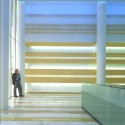
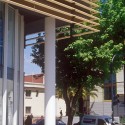
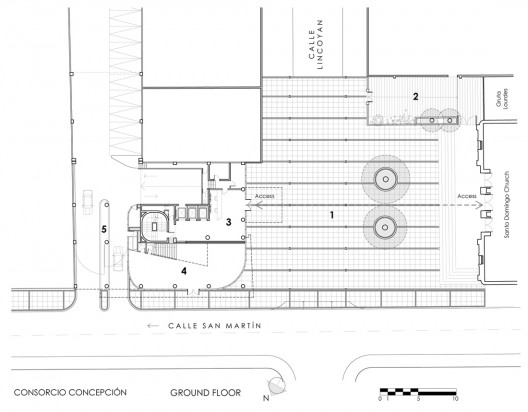
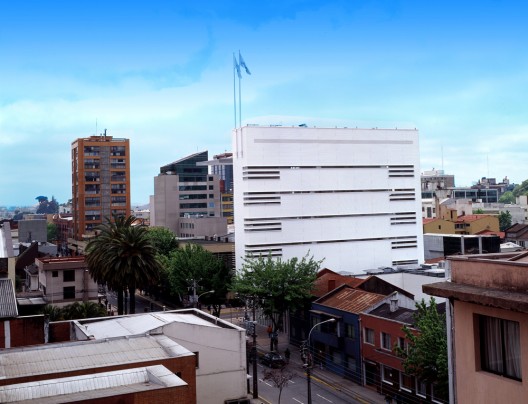
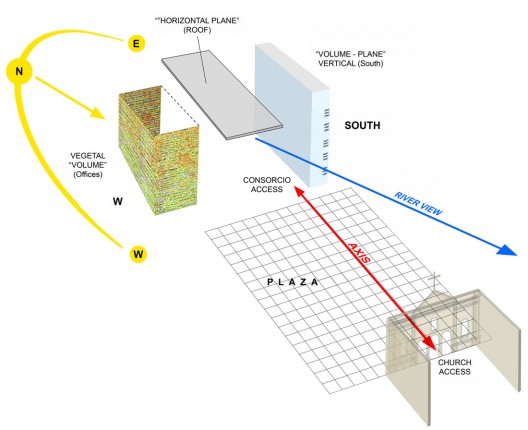
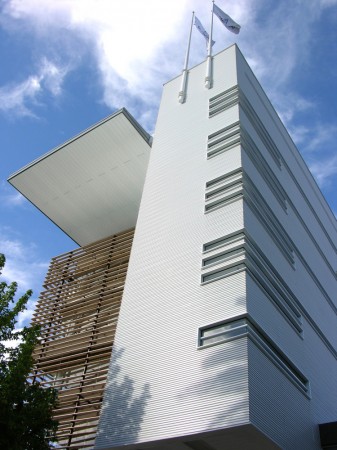
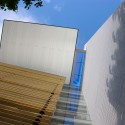
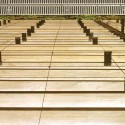
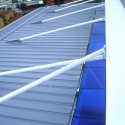
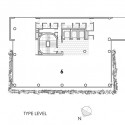
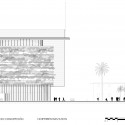
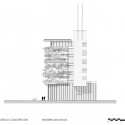
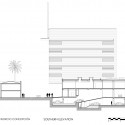
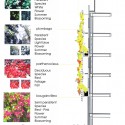
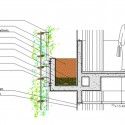






 Stumble It!
Stumble It!